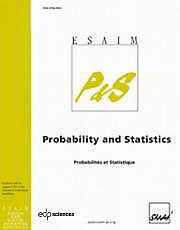No CrossRef data available.
Article contents
Entropic Conditions and Hedging
Published online by Cambridge University Press: 19 June 2007
Abstract
In many markets, especially in energy markets, electricity markets for instance, the detention of the physical asset is quite difficult. This is also the case for crude oil as treated by Davis (2000). So one can identify a good proxy which is an asset (financial or physical) (one)whose the spot price is significantly correlated with the spot price of the underlying (e.g. electicity or crude oil). Generally, the market could become incomplete. We explicit exact hedging strategies for exponential utilities when the risk premium is bounded. Our result is based upon backward stochastic differential equation (BSDE) and a good choice of admissible strategies which allows us to solve our hedging problem.
Information
- Type
- Research Article
- Information
- Copyright
- © EDP Sciences, SMAI, 2007

